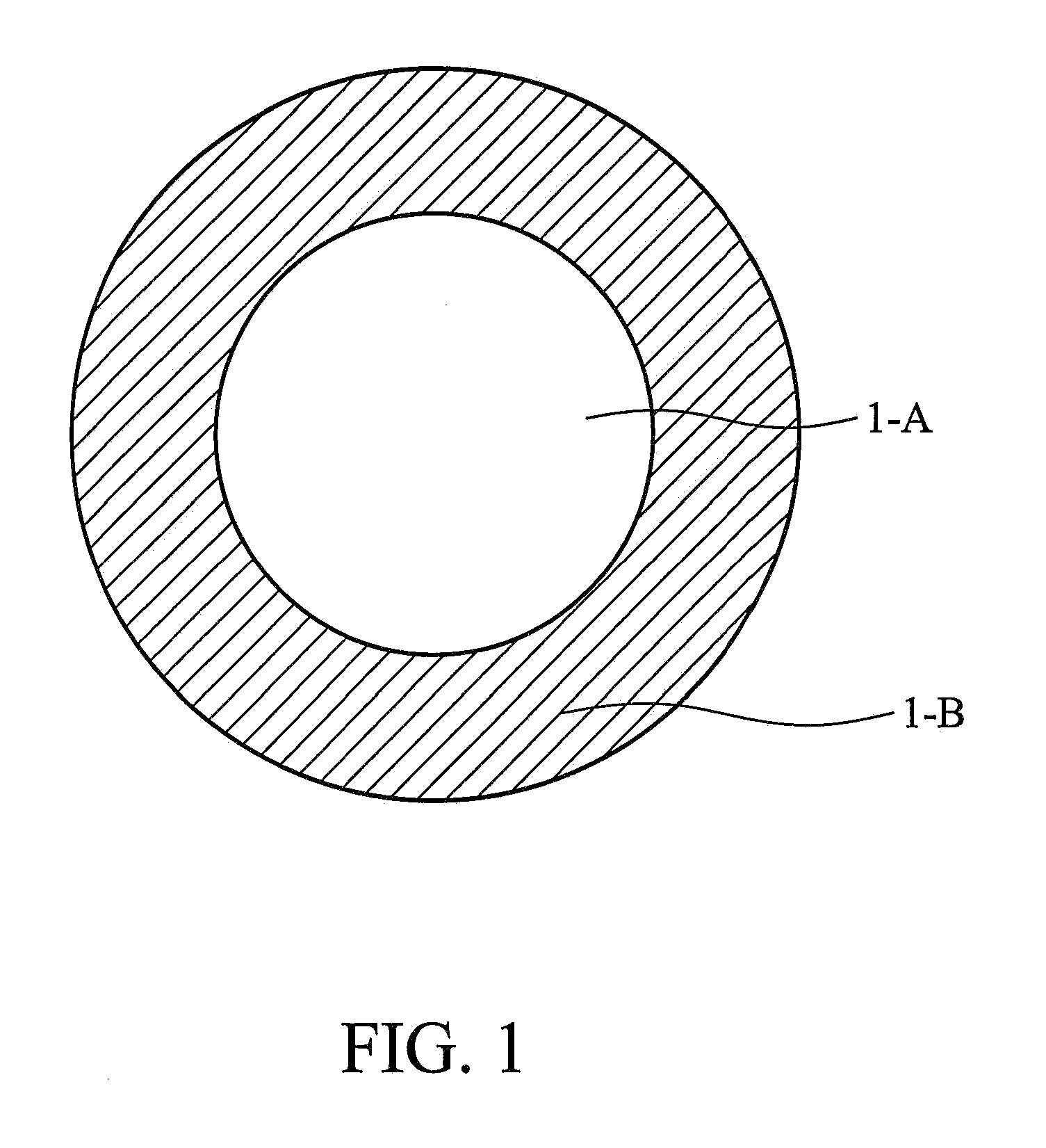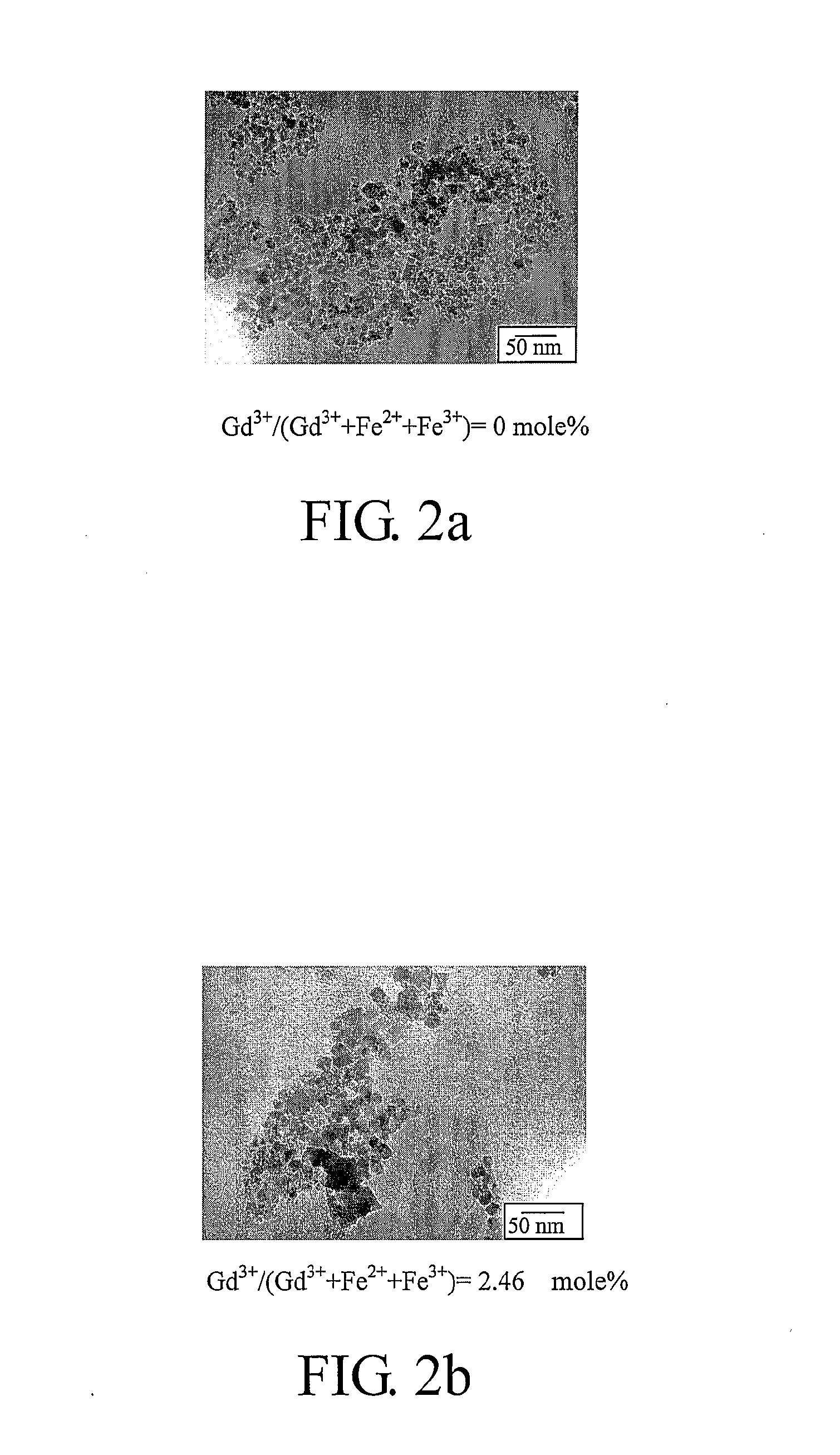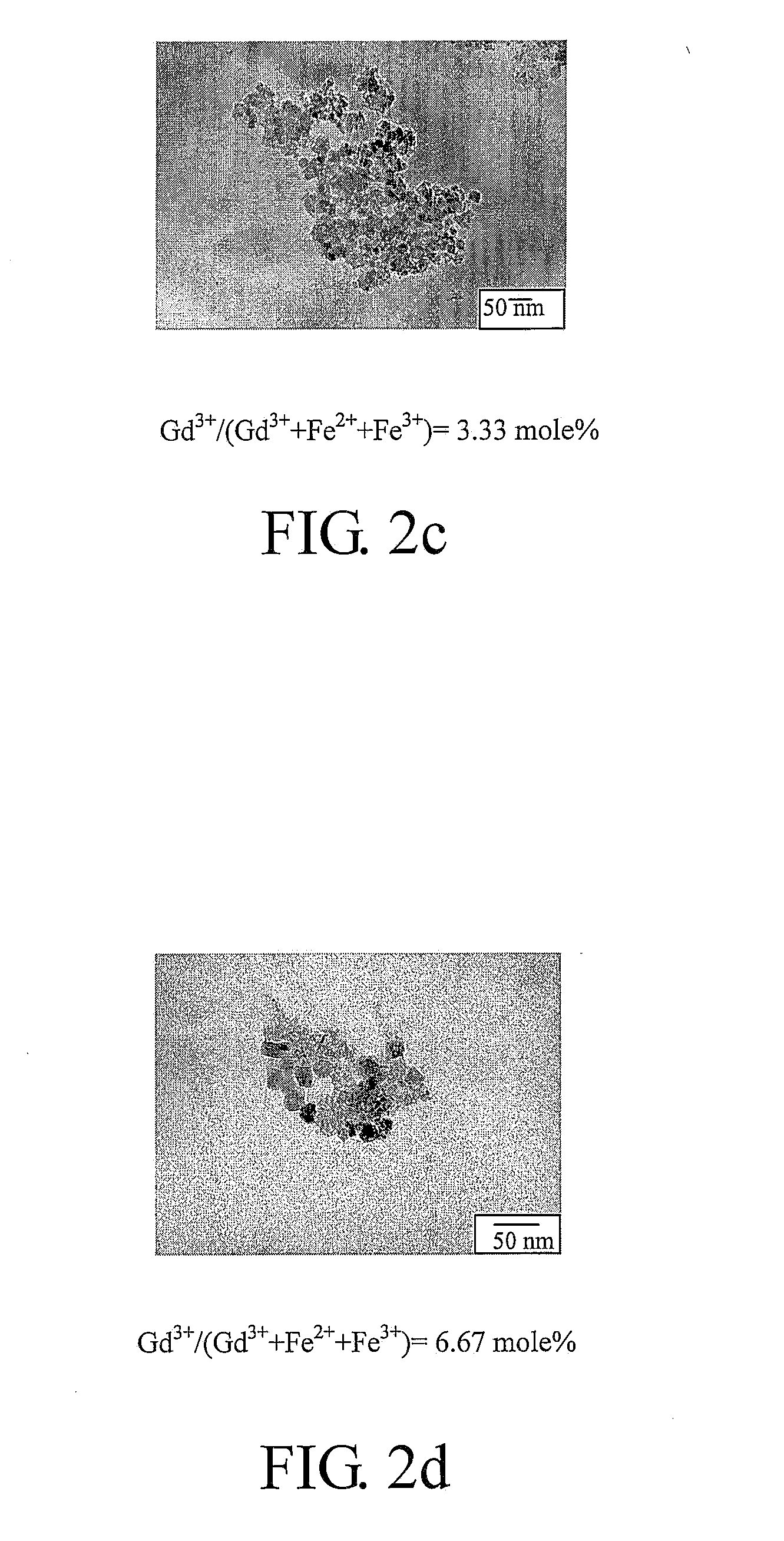Magnetic nanoparticles
a nanoparticle and magnetic field technology, applied in the field of magnetic nanoparticles, can solve the problems of unsatisfactory side effects, inability to inherent tissue characteristics that do not always produce adequate contrast for some clinical applications,
- Summary
- Abstract
- Description
- Claims
- Application Information
AI Technical Summary
Problems solved by technology
Method used
Image
Examples
example 1
[0032] In Example 1, a magnetic nanoparticle of iron oxide comprising an inner-transition element of Gadolinium is given as an example, while the inner-transition element of the invention is not limited to this, for example, the inner-transition element can be any of the lanthanides or the actinides, and the compound of the inner-transition element can be an oxide, sulfide, selenide, telluride, or polonide of the inner-transition element. Also, the amount of the inner-transition element in the magnetic nanoparticle is not limited.
Preparation of Gd-Including Iron Oxide Nanoparticles
[0033] In Example 1, Gd-including iron oxide nanoparticles were utilized as an MRI contrast agent. First, a reaction flask was charged with FeCl2 powders (0.0069 moles), FeCl3 powders (0.0138 moles) and deionized (Dl) water (30 ml). FeCI3 powders were replaced by GdCl3 in various ratios in other examples. NaOH with a concentration of 5M was added to control the pH value of the mixture. The mixture was s...
example 2-1
[0045] In Examples 2-1 and 2-2, a magnetic nanoparticle comprising an iron oxide core and an inner-transition element shell. The iron oxide core is optionally substituted by a Gd complex, such as that described in Example 1. The inner-transition element of the shell and the core can be the same or different. The inner-transition element can be any of the lanthanides or the actinides, and the compound of the inner-transition element can be an oxide, sulfide, selenide, telluride, or polonide of the inner-transition element. In addition, a coupling agent between the core and the shell is further provided. The coupling agent has terminal functional groups, such as carboxyl group, amino group, or other suitable group. The surface of the shell can be further modified by liposome, polymer, aliphatic compound, aromatic compound or combinations thereof.
example 2-1 (
Preparation of Gd-Iron Oide Core / Gd Complex Shell Nanoparticles)
[0046] In Example 2-1 , Gd-iron oxide core / Gd complex shell nanoparticles were utilized in imaging, diagnosis, therapy, and biomaterial separation, such as an MRI contrast agent. First, FeCl3.6H2O powders (0.02 mole) were dissolved in ethylene glycol (160 ml). FeCl3 powders were replaced by GdCl3 in various ratios, such as 0 mol % (no substitution), 3 mol %, or 5 mol %. Sodium acetate (14.4 g) was then added to the solution and stirred for 30 minutes. The mixture was charged in an autoclave and stirred at 800 rpm for 8 hours at 200□. The resulting particles were washed by Dl water and ethanol. 0.1 g of the washed particles is added to ethanol (22 g) and Dl water (4 g) for ultra-sonic vibration for 30 minutes to form the core. The mixture was added TEOS (0.168 mL) and APTES (0.044 mL) and stirred for 2 hours, thereby forming the coupling agent covering the core. The described particles (0.1 g) were added sodium borate bu...
PUM
| Property | Measurement | Unit |
|---|---|---|
| temperature | aaaaa | aaaaa |
| temperature | aaaaa | aaaaa |
| magnetic | aaaaa | aaaaa |
Abstract
Description
Claims
Application Information
 Login to View More
Login to View More - R&D
- Intellectual Property
- Life Sciences
- Materials
- Tech Scout
- Unparalleled Data Quality
- Higher Quality Content
- 60% Fewer Hallucinations
Browse by: Latest US Patents, China's latest patents, Technical Efficacy Thesaurus, Application Domain, Technology Topic, Popular Technical Reports.
© 2025 PatSnap. All rights reserved.Legal|Privacy policy|Modern Slavery Act Transparency Statement|Sitemap|About US| Contact US: help@patsnap.com



